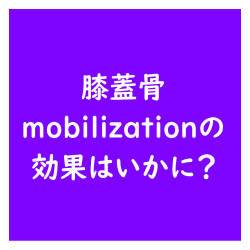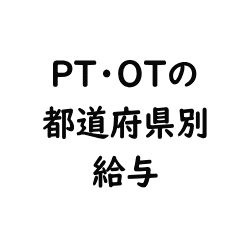目次
TKA症例に対する股関節周囲筋の筋力トレーニング
人工股関節全置換術例においては膝関節周囲筋の柔軟性や膝関節周囲筋力に着目して理学療法アプローチが行われることが多いと思います.
術前からの異常歩行パターンや代償パターンに伴い,股関節周囲筋の機能低下をきたした症例は少なくなく,臨床上もTKA症例に対する股関節周囲筋へのアプローチの重要性を感じることは非常に多いです.
今回はTKA症例に対する股関節周囲筋の筋力トレーニングの効果を検討した無作為化比較試験をご紹介させていただきます.

今回ご紹介する論文
BMC MusculoskeletDisord. 2016 Jun 13;17:259. doi: 10.1186/s12891-016-1104-x.
Does the addition of hip strengthening exercises improve outcomes following total knee arthroplasty? A study protocol for a randomized trial.
Schache MB, McClelland JA, Webster KE
今回ご紹介する論文は2016年に掲載された比較的新しい内容です.
研究の背景
Total knee arthroplasty (TKA) is effective in reducing pain and improving function for end-stage knee osteoarthritis. However, muscle weakness and functional limitations persist despite assistance from post-operative rehabilitation programs that traditionally focus on quadriceps strengthening and range of movement exercises. Hip abductor muscle weakness is evident in knee osteoarthritis and hip muscle strengthening reduces knee pain in this group. Following TKA, people with weak hip abductor strength perform more poorly on measures of physical function. However, very little is known of the effectiveness of including hip abductor strengthening exercises in post-operative rehabilitation. The aim of this trial is to compare the effects of targeted hip abductor strengthening to those of traditional care in a TKA rehabilitation program on muscle strength, patient reported outcomes and functional performance measures.
人工膝関節全置換術は末期の変形性膝関節症における疼痛や身体機能を改善させる上で非常に有用な治療方法です.
しかしながら術後も筋力低下や機能的制限を呈する症例が少なくないのも実際です.
人工膝関節全置換術後には大腿四頭筋トレーニングと膝関節の可動域運動に焦点を当てたプログラムが実施されることが多いです.
変形性膝関節症例における股関節周囲筋の筋力低下が疼痛と関連することは科学的にも明らかにされております.
また人工膝関節全置換術後の股関節外転筋力低下が術後の身体機能と関連することも明らかにされております.
しかしながら股関節外転筋力トレーングが人工膝関節全置換術後のリハビリテーションにおいて有用か否かは明らかにされておりません.
この研究では無作為化比較試験を用いてTKA症例に対する股関節周囲筋の筋力トレーニングの効果を明らかにすることを目的としております.
研究の方法
This protocol describes a single-blinded randomized controlled trial, where 104 participants referred for inpatient rehabilitation following TKA will be recruited. Participants will be randomized using computer-generated numbers to one of two groups: usual care or usual care with additional hip strengthening exercises. Participants will attend physiotherapy daily during their inpatient length of stay, and will then attend between six and eight physiotherapy sessions as an outpatient. Primary outcomes are isometric hip abductor strength and the Knee Injury and Osteoarthritis Outcome Score (KOOS). Secondary outcomes are stair climb test, 6 min walk test, timed up and go, 40 m fast-paced walk test, 30 second chair stand test, isometric quadriceps strength, Lower Extremity Functional Scale (LEFS) and SF-12. Outcome measures will be recorded at baseline (admission to inpatient rehabilitation), and then 3 weeks, 6 weeks and 6 months post admission to rehabilitation.
研究デザインは単一盲検無作為化比較試験となっております.
対象は人工膝関節全置換術を行った104例となっております.
この104例を乱数表を使用して通常の理学療法を行う対照群,通常の理学療法に加えて股関節周囲筋のトレーニングを行う介入群に分類しております.
対象者には入院中は毎日理学療法を行い,外来でも6回・8回の理学療法セッションを行っております.
主要アウトカムは股関節外転筋力,KOOSとなっております.
副耳的アウトカムは段差昇降テスト,6分間歩行距離,TUG,40m最大歩行速度,30秒間椅子立ち上がりテスト,等尺性膝関節伸展筋力,LFES,SF-12となっております.
アウトカムの測定は入院3週,6週,6カ月のタイミングで実施しております.
考察
The findings of this study will determine whether the addition of targeted hip strengthening to usual care rehabilitation improves physical performance and patient reported outcomes following TKA when compared to usual care rehabilitation. This will then determine whether targeted hip strengthening exercises should be included in traditional rehabilitation programs to improve the outcomes following total knee arthroplasty.
この研究結果から股関節周囲筋にターゲットを当てたプログラムは身体機能改善に有用であることが明らかとなりました.
今回はTKA症例に対する股関節周囲筋の筋力トレーニングの効果を検討した無作為化比較試験をご紹介させていただきました.
変形性膝関節症例においては膝関節内反モーメントを軽減させるために,罹患側に体幹を傾斜させた歩行パターンを呈する症例が少なくありません.
罹患側へ体幹傾斜した歩行パターンでは股関節外転筋の筋活動は低下し,こういった歩行パターンが長期化すると股関節機能も低下するものと考えられます.
そのため術後も術側へ体幹傾斜するtrunk lean gaitパターンに改善が得られない症例は非常に多いです.
今回の結果を考えると,人工膝関節全置換術例に対する股関節外転筋への介入は必須ですね.







コメント